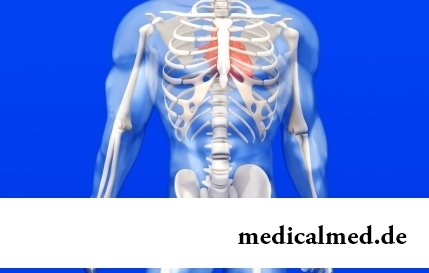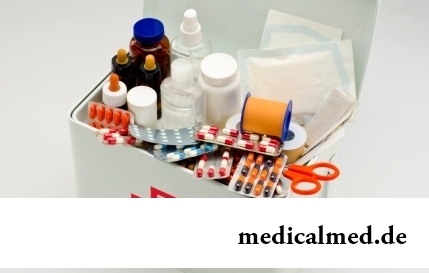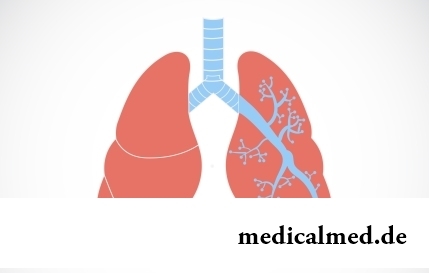





Noliprel
Application instruction:
 Noliprel – the combined antihypertensive.
Noliprel – the combined antihypertensive.
Form of release and structure
Dosage form – tablets: oblong shape, white color, with dividing risky on both parties (on 14 or 30 pieces in the blisters packed into a sachet, in a cardboard pack of 1 sachet).
Content of active ingredients is to 1 tablet:
- Perindoprila эрбумин (a perindoprila третбутиламин) – 2 mg that is equivalent to 1,669 mg to the basis of a perindopril;
- Indapamid – 0,625 mg.
Auxiliary components: cellulose microcrystallic, silicon dioxide colloid anhydrous, magnesium stearate, lactoses monohydrate.
Indications to use
Noliprel's use is shown for treatment of essential arterial hypertension.
Contraindications
- Chronic heart failure in a decompensation stage at not treated patients;
- Hypopotassemia;
- The increased content of potassium in a blood plasma;
- Quincke's disease (Quincke's edema) in the anamnesis;
- Idiopathic or hereditary Quincke's disease;
- Expressed renal (the clearance of creatinine (CC) is less than 30 ml/min.) and/or hepatic (including encephalopathy) insufficiency;
- Syndrome of glyukozo-galaktozny malabsorption, lactose intolerance, galactosemia;
- Simultaneous use of kaliysberegayushchy diuretics, drugs of potassium and lithium, antiarrhytmic means (risk of development of arrhythmia like "pirouette"), the means extending QT interval;
- Period of pregnancy and breastfeeding;
- Age up to 18 years;
- Hypersensitivity to inhibitors of an angiotensin-converting enzyme (APF) and sulfonamides;
- Hypersensitivity to drug components.
Also Noliprel is contraindicated to the patients who are on a hemodialysis.
With care it is necessary to appoint drug at general diseases of connecting fabric (including a system lupus erythematosus, a scleroderma), oppression of a marrowy blood formation, treatment immunodepressants (because of risk of development of an agranulocytosis, a neutropenia), the reduced volume of the circulating blood (against the background of reception of diuretics, an electrolyte-deficient diet, vomiting, diarrhea), cerebrovascular diseases, renovascular hypertensia, a diabetes mellitus, stenocardia, a stenosis of the aortal valve, a hypertrophic cardiomyopathy, chronic heart failure of the IV functional class (on NYHA classification), the hyperuricemia (which is especially followed by an uratny nephrolithiasis and gout), carrying out a hemodialysis with use of high-flowing membranes, labilities of the arterial pressure (AP); during the period after transplantation of kidneys; to patients of advanced age.
Route of administration and dosage
Noliprel accept inside, it is desirable before a breakfast.
The recommended dosing: on 1 tablet of 1 times a day. In the absence of hypotensive effect after 1 month of therapy, the daily dose can be doubled.
Patients of advanced age need to make purpose of drug on the basis of data on potassium concentration level in a blood plasma and functional activity of kidneys. Treatment should be begun with individual selection of a dose taking into account extent of decrease in the ABP, especially at patients with dehydration and loss of electrolytes. It is necessary to begin treatment with 1 tablet of 1 times a day.
At patients with moderate degree of a renal failure (KK of 30-60 ml/min.) the daily dose should not exceed 1 tablet, at KK of 60 ml/min. and above dose adjustment is not required. Treatment needs to be accompanied with control of level of potassium and creatinine in a blood plasma (after two weeks of therapy and then 1 time in 2 months).
In case of emergence against the background of Noliprel's use of laboratory symptoms of a functional renal failure drug should be cancelled. It is necessary to resume the combined treatment only using low doses of drug or in the monotherapy mode. Patients with initial disorder of function of kidneys, including a renal artery stenosis and heavy heart failure are subject to risk of development of a renal failure.
Dose adjustment is not required to patients with moderate degree of a liver failure.
Side effects
- General frustration: often – an adynamy; infrequently – perspiration;
- Cardiovascular system: infrequently – strong decrease in the ABP, including orthostatic hypotension; very seldom – bradycardia, a ciliary arrhythmia, ventricular tachycardia, stenocardia, a myocardial infarction and other disturbances of a cordial rhythm;
- Lymphatic and circulatory systems: very seldom – a leukopenia or a neutropenia, thrombocytopenia, an agranulocytosis, hemolitic anemia, aplastic anemia; at patients is after transplantation of a kidney, being on a hemodialysis development of anemia is possible;
- Alimentary system: often – dryness in a mouth, a lock, diarrhea, nausea, an abdominal pain, vomiting, pain in epigastriums, a loss of appetite, disturbance of flavoring perceptions, dyspepsia; seldom – cholestatic jaundice, a Quincke's disease of intestines; very seldom – pancreatitis; perhaps – hepatic encephalopathy (at patients with a liver failure);
- Organ of sight: often – visual disturbance;
- Acoustic organ: often – a sonitus;
- Nervous system: often – a headache, paresthesias, an adynamy, dizziness; infrequently – lability of mood, a sleep disorder; very seldom – confusion of consciousness;
- Respiratory system: often – passing dry cough, an asthma; infrequently – a bronchospasm; very seldom – rhinitis, eosinophilic pneumonia;
- Musculoskeletal system and connecting fabrics: often – spasms of muscles;
- Reproductive system: infrequently – impotence;
- Urinary system: infrequently – a renal failure; very seldom – an acute renal failure;
- Dermatological and allergic reactions: often – skin rash, an itch, makulopapulezny rash; infrequently – a small tortoiseshell, a Quincke's disease of a throat and/or glottis, mucous membranes of language, lips, persons, extremities, hypersensitivity reaction (is more often skin, at predisposed patients), a hemorrhagic vasculitis; an aggravation of the disseminated lupus erythematosus; very seldom – a toxic epidermal necrolysis, a multiformny erythema, Stephen-Jones's syndrome, photosensitivity reactions;
- Laboratory indicators: a hypovolemia and a hyponatremia, a hypopotassemia, passing increase in level of glucose and uric acid in blood, a tranzitorny hyperpotassemia, insignificant increase in level of creatinine and urea in a blood plasma (is more often at a renal artery stenosis, a renal failure, against the background of therapy of arterial hypertension diuretics); seldom – a hypercalcemia.
Special instructions
At the beginning of therapy careful observation of the patients who were earlier not accepting at the same time two antihypertensives (perindoprit, индапамид) as the risk of an idiosyncrasy increases is required.
Co-administration with lithium drugs is not recommended.
Administration of drug is not recommended to patients with a stenosis of two renal arteries or the only functioning kidney.
As the hyponatremia can cause sudden development of arterial hypotension, regular control of level of concentration of electrolytes in a blood plasma is required, especially at patients with a stenosis of renal arteries is after vomiting or diarrhea. For recovery of water and electrolytic balance intravenous administration of 0,9% of solution of sodium of chloride is recommended. Therapy can be continued after normalization of the ABP and volume of the circulating blood, applying a low dose of drug or having switched over monotherapies to the mode.
Treatment should be accompanied with regular control of level of content of potassium in a blood plasma.
The risk of development of a neutropenia against the background of use of drug increases at patients with functional disorder of kidneys, is more often at a scleroderma, a system lupus erythematosus. Symptoms of a neutropenia have dozozavisimy character.
At the accompanying therapy by immunosuppressive means at patients with diffusion pathologies of connecting fabric it is necessary to control the level of leukocytes in blood. At emergence of symptoms of quinsy, fever and other infectious diseases it is necessary to see a doctor.
At emergence of signs of hypersensitivity to drug in the form of a Quincke's disease means the patient should cancel and appoint the corresponding therapy immediately. At a paraglossa, a throat or a glottis ensuring passability of respiratory tracts and immediate hypodermic introduction of Epinephrinum is recommended (adrenaline).
When carrying out the differential diagnosis at patients with pain in a stomach it is necessary to consider a possibility of development of a Quincke's disease of intestines.
Co-administration with an immunotherapy poison of hymenopterous insects is not recommended (not to allow development of anaphylactoid reaction Noliprel's reception should be stopped temporarily in 24 hours prior to the procedure of desensitization).
There is a risk of anaphylactoid reactions when carrying out an aferez of lipoproteins of the low density (LPNP) with dextran sulfate use, administration of drug needs to be stopped before each procedure of an aferez.
Reception of tablets can cause dry cough in the patient.
To avoid sharp falling of the ABP treatment should be begun with low doses of drug and then to gradually raise them, considering portability and laboratory indicators of level of creatinine in a blood plasma.
Treatment of patients with coronary heart disease and insufficiency of cerebral circulation should be begun with low doses.
At renovascular hypertensia use of drug needs to be begun only in the conditions of a hospital with low doses with regular control of function of kidneys and contents of potassium in a blood plasma.
At arterial hypertension and coronary heart disease use of drug has to be made together with beta adrenoblockers.
Treatment of the patients with a diabetes mellitus who are on insulin or hypoglycemic means for intake within the first month has to be followed by regular control of level of glucose in blood, especially at a hypopotassemia.
At planned surgical intervention administration of drug is stopped in 12 hours prior to the beginning of the general anesthesia.
In case of substantial increase of activity of liver enzymes or emergence of jaundice Noliprel's use should be cancelled.
Development of anemia in the patients who are on a hemodialysis or after transplantation of a kidney is possible.
At development of hepatic encephalopathy use of diuretics should be stopped.
It is necessary to avoid influence of direct sunshine and ultra-violet radiation. At development against the background of treatment by drug of reactions of photosensitivity it is necessary to cancel its reception.
Prior to use of drug and during treatment it is regularly necessary to determine the level of concentration of ions of sodium in a blood plasma, especially at patients of advanced age and patients with cirrhosis.
Patients of advanced age, the exhausted patients who are on the accompanying drug treatment, patients with cirrhosis, peripheral hypostases or ascites, with the increased QT interval, heart failure, coronary heart disease are most subject to risk of development of a hypopotassemia against the background of Noliprel's use. At this category of patients the hypopotassemia promotes emergence of heavy disturbances of a cordial rhythm therefore they need to provide regular control of level of potassium ions in a blood plasma from first week of treatment.
Increase in level of uric acid in a blood plasma increases risk of emergence of attacks of gout.
Before carrying out a research of function of epithelial body it is necessary to cancel reception of diuretics.
When carrying out a drug test Noliprel can give positive reaction.
During drug use by the patient it is necessary to be careful at control of vehicles and mechanisms.
Medicinal interaction
With other means only the attending physician can define safety of co-administration of Noliprel, considering a condition of the patient and the accompanying pathologies.
Terms and storage conditions
To store in the place, unavailable to children, at the room temperature.
Period of validity – 3 years, after opening of a sachet – 2 months.
Name of drug
Price
Drugstore
Noliprel And тбл 2,5mg/0.625mg No. 30, Serdiks/Servye of Ltd company
639 rub.
 Network of the Moscow drugstores of IFC
Network of the Moscow drugstores of IFCNoliprel And тбл forte 5mg/1.25mg No. 30, Serdiks/Servye of Ltd company
708 rub.
 Network of the Moscow drugstores of IFC
Network of the Moscow drugstores of IFCNoliprel And Bee forte тбл п/пл/о 10mg/2,5mg No. 30, Serdiks/Servye of Ltd company
856 rub.
 Network of the Moscow drugstores of IFC
Network of the Moscow drugstores of IFCFour segments of dark chocolate contain about two hundred calories. So if you do not want to recover, better not to eat it is more than two segments in days.

There comes the season of issues. Many Russians already dream of outdoor recreation, trips, beautiful seaside beaches....
Section: Articles about health
The state of health of the person in many respects depends on food. The organism will well function if during food it receive only useful substances, necessary vitamins and microelements. In this case there will be no problems with digestion, with лишн...
Section: Articles about health
All the known slogan "Protect Men!" arose not from scratch. In a sense, the nature created men much less adapted for vital disorders, than it seems at first sight. Statistically, men are ill more often, than women, have the majority of illnesses heavier and earlier die. The situation is aggravated with the fact that our fathers, husbands, brothers and sons are not always inclined to care for the health. Partly it happens because of unwillingness of t...
Section: Articles about health
For many women the word "fat" sounds as a sentence. In aspiration to an ideal figure they try to exclude, first of all, from with...
Section: Articles about health
The technique of acupuncture (acupuncture) is used in the medical purposes more than three and a half millennia. It is eurysynusic and recognized as official medicine in the majority of the developed countries of the world. Influence by fine needles on so-called points...
Section: Articles about health
Beauty shop – the place which is associated only with positive emotions: joy, pleasure, relaxation. However visit of salon where work with biological material of clients, not always harmlessly is conducted. Today more than 100 pathogenic microorganisms who can catch in beauty shop including deadly to health are known....
Section: Articles about health
The stroke is one of the most widespread diseases of the person, annually in the world about 6 million cases эт are registered...
Section: Articles about health
All know that self-treatment is dangerous. However absolutely it is almost impossible to do without it. Rate of modern life does not allow to handle each small trouble to the doctor and information on ways of independent rendering medical the help...
Section: Articles about health
Phobia – the persuasive fear of a certain contents shown in a specific situation against the will of the person. Concepts of a phobia and fear are similar, however if the fear is natural protective function of mentality, then the phobia is its deviation. So the person can feel the unaccountable, baseless fear accompanied with neurotic symptoms (perspiration, a shiver, a fever) before any ordinary phenomenon – for example, a trip by the subway or a simple dog....
Section: Articles about health
People know that thermal sources have salutary force long ago. Treatment by natural waters is one and...
Section: Articles about health
Climax - process of fading of reproductive function of an organism in process of its aging. At women the main sign of its approach is the termination of a menstrual cycle. Officially the menopause is diagnosed when periods are not observed in течен...
Section: Articles about health
The popular expression "run from a heart attack" became the motto of the people supporting active lifestyle. Moreover, run became a peculiar fashionable tendency: sales of racetracks and the accompanying goods for run are at permanently high level. Whether really it is possible for one and all people and it is necessary to run to receive the portion of health, a charge of cheerfulness and good mood?...
Section: Articles about health
Color of plants is caused by presence at them of certain chemical compounds. Let's talk about what is meant by various colors of vegetables and fruit and what properties they give them....
Section: Articles about health
All of us, unfortunately, should face flu nearly an every year. It would seem, so frequent disease has to be study...
Section: Articles about health
Some people consider what for medicine of the 21st century of secrets in the field of health of the person almost does not exist. It absolutely not so. The more answers scientists receive, the more the most difficult questions are raised for them by life. Besides, there are diseases, not объясн in any way...
Section: Articles about health
The main role in development of a peptic ulcer of a stomach and duodenum the bacterium Helikobakter plays pilor. Activity and the strengthened reproduction of this microorganism lead to weakening of protection of mucous membranes and their erosive damage. Displays of an illness seriously reduce quality of life: patients regularly test attacks of severe pain, heartburn, nausea. On this background also psychoemotional malfunctions develop: a kidney-vetch, as a rule, shows an acrimony, ча...
Section: Articles about health
Antibiotics - - it is possible to call the chemical compounds suppressing growth of bacteria the break in the field of medicine which allowed to save persons...
Section: Articles about health
Statistically, pathologies of a thyroid gland in the world more than 500 million people have. Failures in work of this body lead to heavy disbolism, development of heart diseases, vessels, a reproductive and nervous system. In hard cases excessive...
Section: Articles about health
Tea is loved and use almost everything. This drink has tonic properties, contains the tannins capable to suppress activity of causative organisms. Recently great popularity was gained by teas with vegetable additives. The medicative herbs, spices and fruit which are a part of such mixes enrich drink with vitamins and microelements, increasing its nutritional value and creating additional curative effect....
Section: Articles about health
Each person knows that fervescence is an illness sign. However about existence of diseases can to suite...
Section: Articles about health
Obesity is called a disease of 21 centuries, for the last 100 years the number of the people suffering from excess body weight considerably increased. Statistically, on Earth already about 1,5 billion corpulent people, and 500 million from them have extreme degree of completeness, are negative...
Section: Articles about health
They say that to ensure health and longevity of people it is obliged. Really, at competent approach to these questions, minimization of an adverse effect of many factors does not represent a special problem. Practically everyone has an opportunity to play sports, to pick up an optimum operating mode and rest, to adjust healthy food, to refuse addictions. It is more difficult to exclude hit in an organism of harmful substances through a respiratory organs: not all are able to afford to live in the area with хо...
Section: Articles about health
What woman does not dream of a beautiful and thick hair? So far physicians developed difficult schemes on hair transplant, in the bet industry...
Section: Articles about health
Energy saving lamps are one of the most popular products of innovative technologies, and there is no wonder: they much more economic also are more long-lasting than usual filament lamps. At the same time there are fears that energy saving bulbs can become the reasons...
Section: Articles about health
Dark circles (bruises) under eyes – a shortcoming with most of which often fight against the help of cosmetics (proofreaders, saloon procedures and so forth), eliminating only its visibility. However, according to doctors, skin around eyes – the indicator of many disturbances in an organism. To reveal them at early stages, without having disguised bruise, and having addressed its reasons – a task of each person who is regularly finding under with own eyes dark stains. Early detection and elimination of the disease lying in wasps...
Section: Articles about health



